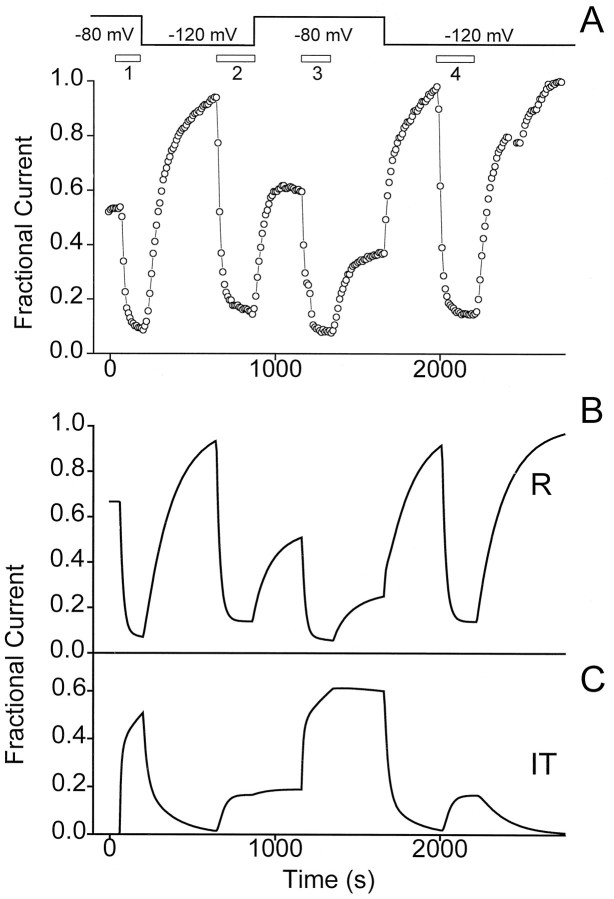Fig. 8.
Both buildup and relief of block from the slowly recovering fraction of channels are strongly voltage-dependent.A, A protocol was used to investigate the blocking characteristics of toxin when application and washout occur at different HPs. First, SNX-331 (1 μm) was applied at anHP = −80 mV. Washoff of toxin occurred with a concomitant change in the HP to −120 mV. After recovery of current, SNX-331 was applied again, but now with the oocyte held at −120 mV, and washoff after this application occurred at anHP of −80 mV. In the last two segments of this protocol, the same HP is maintained throughout toxin application and washoff. Toxin application and washoff is first done at anHP of −80 mV. Full recovery of current is then achieved by hyperpolarizing the cell to −120 mV, and application and washoff of toxin at this hyperpolarized potential follows. B, Using the same modulated receptor scheme and parameters as in Figure 7, a model of the expected peak current levels during the above given protocol was generated. C, Plot of the fractional population of the I state of the channel with toxin-bound (IT) as predicted by the modulated receptor scheme.

